Last updated: November 6, 2023
Article
My Park Story: A Shared Passion for Preservation
Hear from members of the National Historic Landmark Program’s Social Media Team as they share the NHLs that inspired their professional journeys. Their park stories are full of childhood memories of visiting local and national parks, finding unexpected history in their backyards. In their current jobs, they share a passion for preserving the nation's history and sharing the powerful stories of these sites with you!
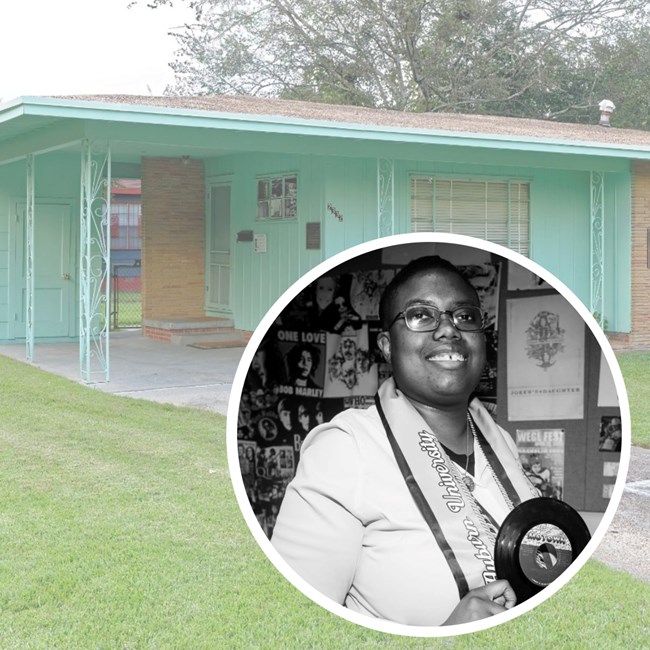
NPS Photo
Medgar and Myrlie Evers NHL
Zee McThomas, National Council for Historic Preservation Intern
My name is Zion “Zee” McThomas and I am a National Council for Historic Preservation intern in the National Historic Landmarks Program. My Park Story started back in 2014 as a freshman at Alcorn State University, where there is a statue of Medgar Wiley Evers. I remember walking up to it and reading the inscription. I called my mother and asked her why the new dorms were named after him. My mother in all her southern sassiness chastised me for not knowing that Evers was a civil rights activist who attended Alcorn State and, at the time of his assassination, served as the president of the Jackson, Mississippi chapter of the NAACP. She recalled finding a book at the campus library with his name on the book card. She told me the name of the book and told me to go find it. I did and sure enough, his signature was right there. I remember the rush of adrenaline that I felt holding a piece of history in my hand.
As a graduate student at Auburn University, I had the opportunity to work on a public history project with the Medgar and Myrlie Evers Home National Monument in Jackson. There was no question about it; I was working on that project. Over the course of a semester, two other students and I worked with my professor and Superintendent Keena Graham to create a StoryMap titled "Why I Live in Mississippi." The digital exhibit increases access to this site, which is only open for tours by appointment.
By the end of the semester, I had learned so much about Evers and his dedication to liberating Black Mississippians from the evils of white supremacy. He traveled all over the state to advocate and educate Black Mississippians about their rights and the power of their voice. He even spent time in my hometown of Meridian and hosted a meeting at my uncle’s church. Working on that project reminded me to be proud of being a Mississippian and to be grateful to those who paid the ultimate price for freedom.
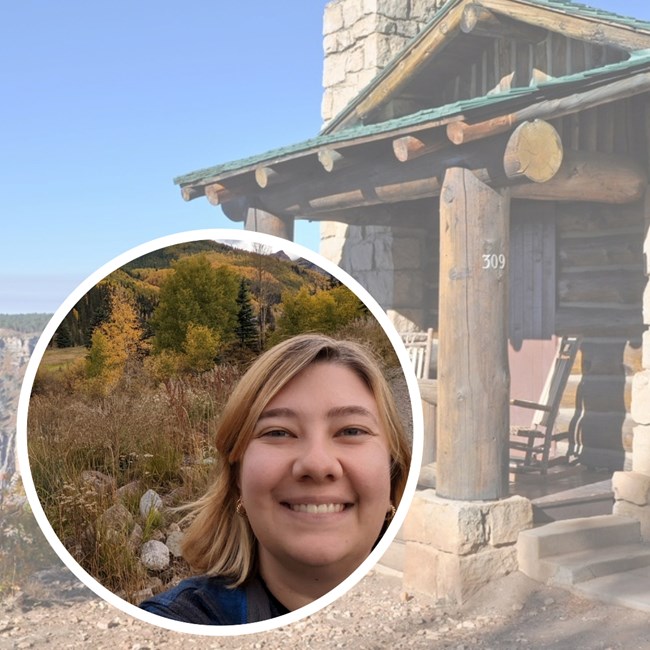
NPS Photo
Grand Canyon Lodge NHL
Poppie Gullet, Historian, Intermountain Region
I have been visiting National Parks for as long as I can remember. My family would pile into the van every summer and drive to parks around the west. On one of my favorite trips, my parents saved up so we could stay in the cabins at the Grand Canyon Lodge. Although the main lodge overlooks the canyon, it was the little log buildings I fell in love with. Each one made me think of stories from Laura Ingalls Wilder, and I have fond memories of playing cards and watching the sun set over the canyon from our porch.When I took history classes in college, I learned that the lodge and cabins that inspired me as a visitor were designed by Gilbert Stanley Underwood (1890-1961). Underwood had a tremendous impact on defining what we think of as “Park Service Rustic” architecture. Working for the Utah Parks Company in the 1920s, Underwood created buildings that blended into their natural environment. Perhaps you’ve visited one of his designs and felt that same sense of beauty I did. In addition to Grand Canyon Lodge, he designed Old Faithful Inn at Yellowstone, Ahwahnee in Yosemite, the Bryce Canyon Lodge, and more.
The Grand Canyon Lodge is an NHL, important for the national story it tells about American architecture. Places like this made me want to spend more time in old buildings as a kid, and now at the NPS, I help ensure future visitors can always enjoy them.
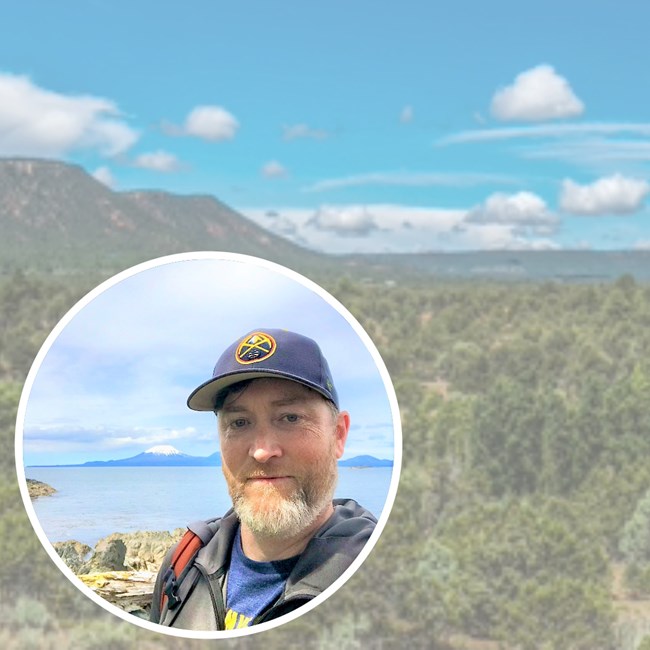
NPS Photos. Stan Ford
Glorieta Pass Battlefield NHL
Erik Johnson, Historian, Alaska Region
Growing up in Colorado, it could feel like not much happened there, based on the history we learned in school. When I went to Washington DC for a graduate history degree, people said, “Oh, neat, there’s so much history there!” They’re right, but it turns out there's so much history everywhere, and much can be learned by visiting local National Historic Landmarks.Before becoming a historian for NPS, I took a trip to Pecos National Historical Park in New Mexico, which contains the Glorieta Pass NHL. An 1862 Civil War battle was fought there, and Colorado Volunteers defeated Texas Confederates. I thought Civil War battles were east of the Mississippi! My mind was blown, and, at the time, I was proud Coloradans played a part in winning the war (yet the more I read, I learned some Colorado Volunteers were not heroes following Glorieta). Trips like this made me eager to learn more and to be a part of preserving and telling lesser-known histories.
I now help preserve historic sites for the NHL program in Alaska. Guess what I didn’t learn in school? The Japanese attacked and invaded Alaska during WWII. Alaska has 8 WWII NHLs. A great part of studying and preserving the past is finding the unexpected. Glorieta and Alaska’s WWII experiences have triumphs mixed with unimaginable tragedies. And there is still so much to learn.
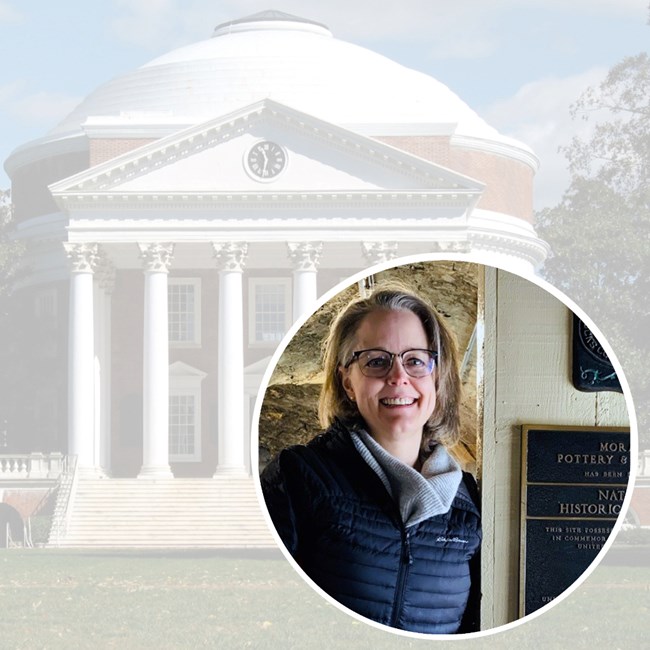
NPS Photos
Colonial Williamsburg & University of Virginia NHLs
Kathryn Smith, NHL Program Manager, National Capital Region
I began my journey to historic preservation studying at two NHLs. While attending the College of William and Mary in Virginia, I took classes in the Wren Building and wandered the streets of Colonial Williamsburg’s historic district. I became fascinated with the buildings and landscapes and the stories of the people who designed, constructed, and occupied them. After, I continued my studies in architectural history at University of Virginia, another NHL and World Heritage Site.These two NHLs stand out as important places in the nation to understand the history of higher education and the specialized architecture that developed around it in the 17th to 19th centuries. Completed in 1700, the Wren Building is the oldest academic building in continuous use in the United States and among the oldest buildings in Virginia. Thomas Jefferson designed his “academical village” at the University of Virginia to reflect his ideals about learning. Completed in 1817, its architecture is recognized as a masterpiece and the inspiration for numerous college campus throughout the world. Since graduating with a Master’s degree in Architectural History and a certificate in historic preservation, I have studied and helped to preserve numerous historic places across the U.S. In my job and in my free time, I try to visit NHLs wherever I can.
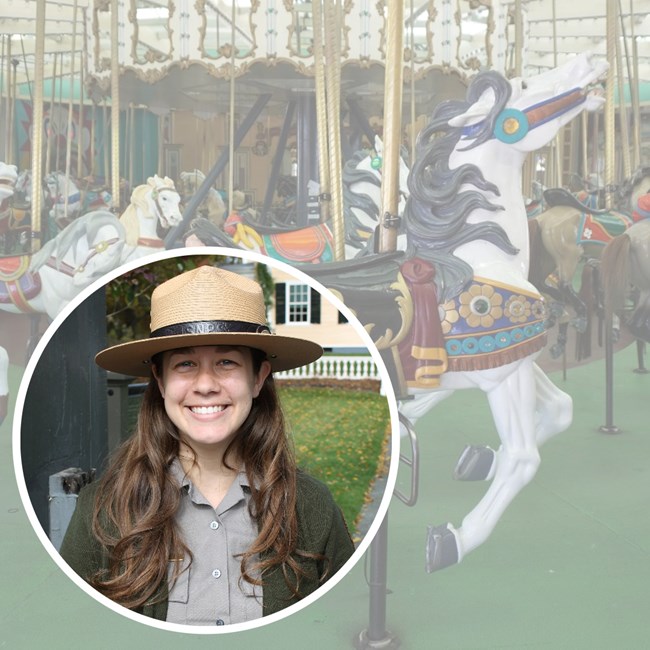
NPS Photo
Santa Cruz Looff Carousel NHL
Anna Christie, Historian, Pacific West Region
Every kid growing up in the California Bay Area knows the jingle for the Santa Cruz Beach Boardwalk. It’s a popular trip for families, and no excursion is complete without a ride on the Looff Carousel and Giant Dipper roller coaster.My park story didn’t start as a toddler riding the carousel for the first time – I had no idea I was riding on a piece of history. Eleven of the original horses, hand-carved by Charles Looff, have been restored after years of use and returned to the ride. Their broken legs were repaired, surface holes filled in, their details hand-painted, taking about 50 hours each. The 342-pipe Ruth band organ from 1894 still provides music for the ride.
I came to appreciate the boardwalk as a historic site while studying history at UC Santa Cruz and working at the local museum. It’s a rare survivor of the Coney Island-style amusement parks and the last of its kind on the Pacific Coast. Its two most popular rides, the carousel and roller coaster, are National Historic Landmarks and have been delighting and thrilling visitors for a hundred years.
Maybe it’s nostalgia talking, but the shared experience so many people have with this ride feels special, too. Places like this hold cultural significance because of the memories we make when we visit them.
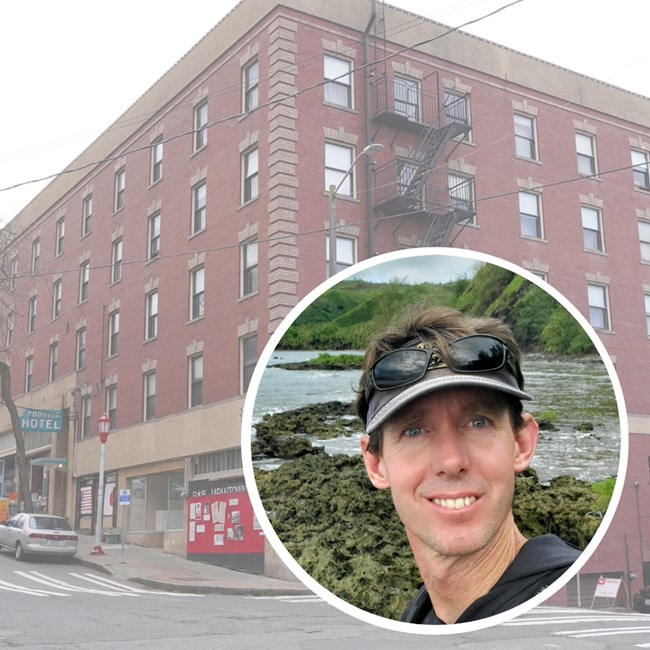
NPS Photo
Panama Hotel NHL
Chris Johnson, Historian, Pacific West Region
I have found that inspiration comes as much from the people who steward historic places as from the places themselves. A few years ago, I was on an assignment to organize a walking tour of Seattle for an academic conference. The Panama Hotel, located at the heart of the city’s historic Japantown, was at the top of my list of sites to visit. After unsuccessfully trying to reach the owner, Jan Johnson, by phone and email, I decided to head to the hotel.Once there, I waited as Jan attended to guests. Finally, a chance to introduce myself appeared, and before I knew it, I was being shepherded down to the basement while Jan asked questions about the tour. Next, I found myself tossing sacks of towels and linens in the back of a pick-up truck. Soon we were on our way to the laundromat to unload. All the while, Jan talked enthusiastically about her efforts to preserve the hotel as close as possible to its historic condition.
The Panama, she said, was “greener” than any new building. It still used the same amount of electricity as it did in 1910. The orientation of the windows let in natural light year-round, and many of the furnishings were built by the previous owner from recycled wood crates. The tour, led by Jan, ended up being a smashing success. It was especially meaningful to me because it showed the dedication of NHL stewards, many of whom are making ends meet as business owners while preserving our nation’s heritage and taking the time to share their stories with the public.
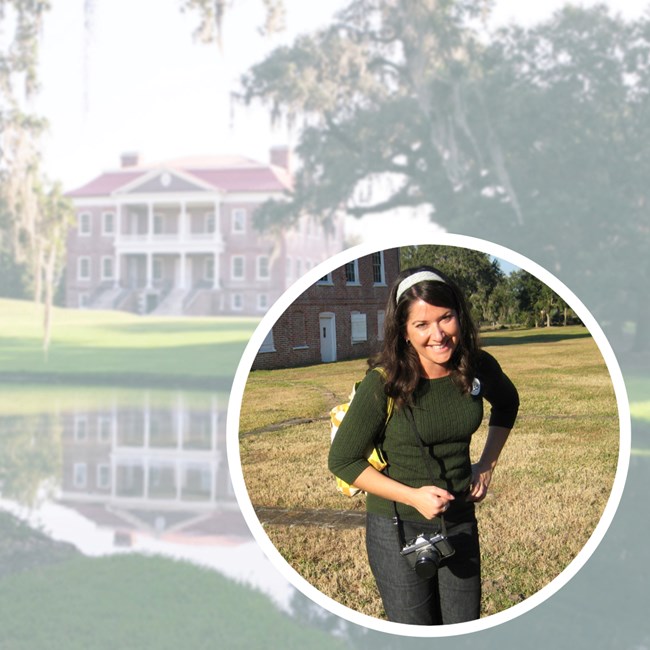
NPS Photo
Drayton Hall NHL
Alesha Cerny, Architectural Historian, Southeast Region
I grew up visiting historic places. As part of an undergraduate course in historic preservation, I visited Drayton Hall, an NHL near Charleston, South Carolina. Drayton Hall has a unique preservation philosophy. Rather than filling it with period decorative art pieces, the hall has no central heating or air, electric lighting, plumbing, or furnishings. The building is stabilized and preserved but not completely restored. This allows people to see how the house was constructed. Additionally groundbreaking for the time, the interpretation of the hall recognized the contributions of African Americans who were enslaved there. These efforts have made great strides since the early 2000s and continue to develop.After my first visit in 2000, I developed a passion for historic preservation and would return many times, bringing family and friends to experience Drayton Hall. After a visit in 2007, I began my National Park Service career in the Midwest Regional Office. Currently, I work for Interior Region 2, which oversees NHLs in the Southeast, including Drayton Hall. I understand that the National Park Service’s role in preservation extends beyond park boundaries. NPS preservation is a nationwide effort where we work with our partners to preserve the diverse history of people and events that built the nation.

NPS Photo
Monticello NHL
Ellen Rankin, Architectural Historian, Southeast Region
Hi! I am an architectural historian with the National Historic Landmarks Program. I attended the University of Virginia and conducted my archeological field school at Monticello, both NHLs and a UNESCO World Heritage Site. During my field school, we helped uncover a portion of the enslaved settlement for Monticello's home farm quarter, which continues to help researchers understand the lives of the enslaved people who labored on the site.As a frequently moving military child, I was fortunate to visit National Parks across the country. Acadia National Park is an early memory and is still a family favorite. While living in the DC area, my family visited Shenandoah National Park a few times a year in my father’s still-operating VW “bus.” In high school, I had amazing teachers in Anthropology and U.S. History, where I wrote my first historic structures report at George Mason’ Woodlawn. This site also includes the Frank Lloyd Wright-designed Pope-Leighey House that was saved from demolition!
In addition, I am a mom to a 6-year-old who has been with me all along my National Park and National Historic Landmarks adventure – and this kid loves it. Seeing people's faces light up with excitement when they learn about and connect with a site makes me proud to help preserve them.
